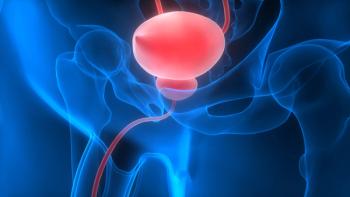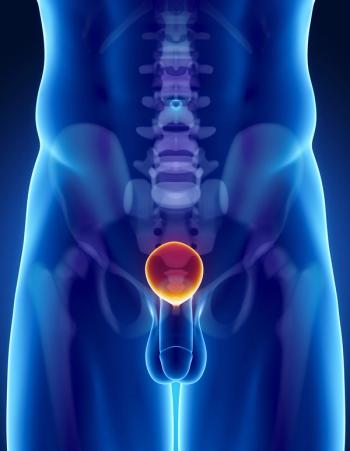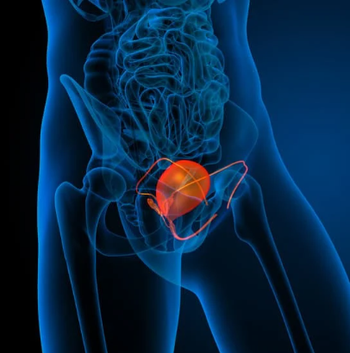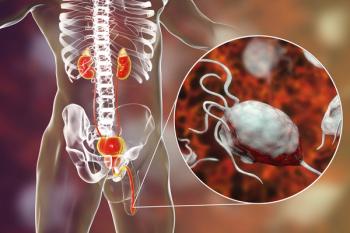
Oncology NEWS International
- Oncology NEWS International Vol 6 No 11
- Volume 6
- Issue 11
No Benefit Seen for Adjuvant Chemo in Advanced Prostate Cancer
HAMBURG-Patients with poor-prognosis M1 prostate cancer who undergo orchidectomy have little to gain and much to lose from adjuvant mitomycin (Mutamycin) therapy, according to the findings of a phase III study from the EORTC’s Genitourinary Tract Cancer Cooperative Group.
HAMBURGPatients with poor-prognosis M1 prostate cancer who undergo orchidectomy have little to gain and much to lose from adjuvant mitomycin (Mutamycin) therapy, according to the findings of a phase III study from the EORTCs Genitourinary Tract Cancer Cooperative Group.
Dr. Sophie Fosså, of the Norwegian Radium Hospital, Oslo, presented the results at the Ninth European Cancer Conference (ECCO 9).
The 189 study participants were randomized after surgery to receive either mitomycin, 15 mg/m2 IV every 6 weeks for 9 months and every 3 months thereafter, or to a control group. The EORTC investigators had based their choice of drug on a phase II study that had shown a 29% response rate and acceptable toxicity for mitomycin in this setting.
Progression-free survival was the same in both study arms, although overall survival was actually shorter among mitomycin-treated patients, Dr. Fosså reported. Median follow-up in this study was 4 years.
We have to be careful in applying adjuvant chemotherapy in M1 prostatic cancer, Dr. Fosså said. She noted that mitomycin not only afforded no survival benefit but also negated the improvement in patients quality of life that resulted after orchidectomy.
Quality of life was measured using an abbreviated version of the EORTC C30 Quality of Life Questionnaire as well as a specially developed urinary function scale that assessed urinary frequency, urinary control, painful urination, and bladder emptying.
Patients who underwent surgery alone fared significantly better than their chemotherapy counterparts with respect to global quality of life, physical functioning, role functioning, fatigue, appetite, and dyspnea. Scores for pain and urinary function were similar in both groups, however.
This study showed that quality of life assessment is possible in a busy clinical setting if the clinician wants to do it, Dr. Fosså said. This is one of the first prospective studies in prostate cancer based on what patientsand not physiciansthink about quality of life.
Articles in this issue
about 28 years ago
New Strategies Forecast for Pancreatic Cancer Treatmentabout 28 years ago
Tumor Cells in Marrow Predict Cancer Outcomeabout 28 years ago
Zeneca Sponsors Rural Breast Cancer Outreachabout 28 years ago
Private Sector Purchasers Need Cancer Care Data to Determine Qualityabout 28 years ago
Payers May Ignore Aspects of Care Most Important to Patientsabout 28 years ago
BCG May Be Superior to Chemotherapy in Bladder Cancerabout 28 years ago
Adjuvant Vaccine Therapy Prolongs Survival in Colon Cancerabout 28 years ago
‘Treat Low-risk Febrile Neutropenic Patients at Home’about 28 years ago
‘Don’t Wait Too Late to Make End-of-Life Decisions’Newsletter
Stay up to date on recent advances in the multidisciplinary approach to cancer.


















































































